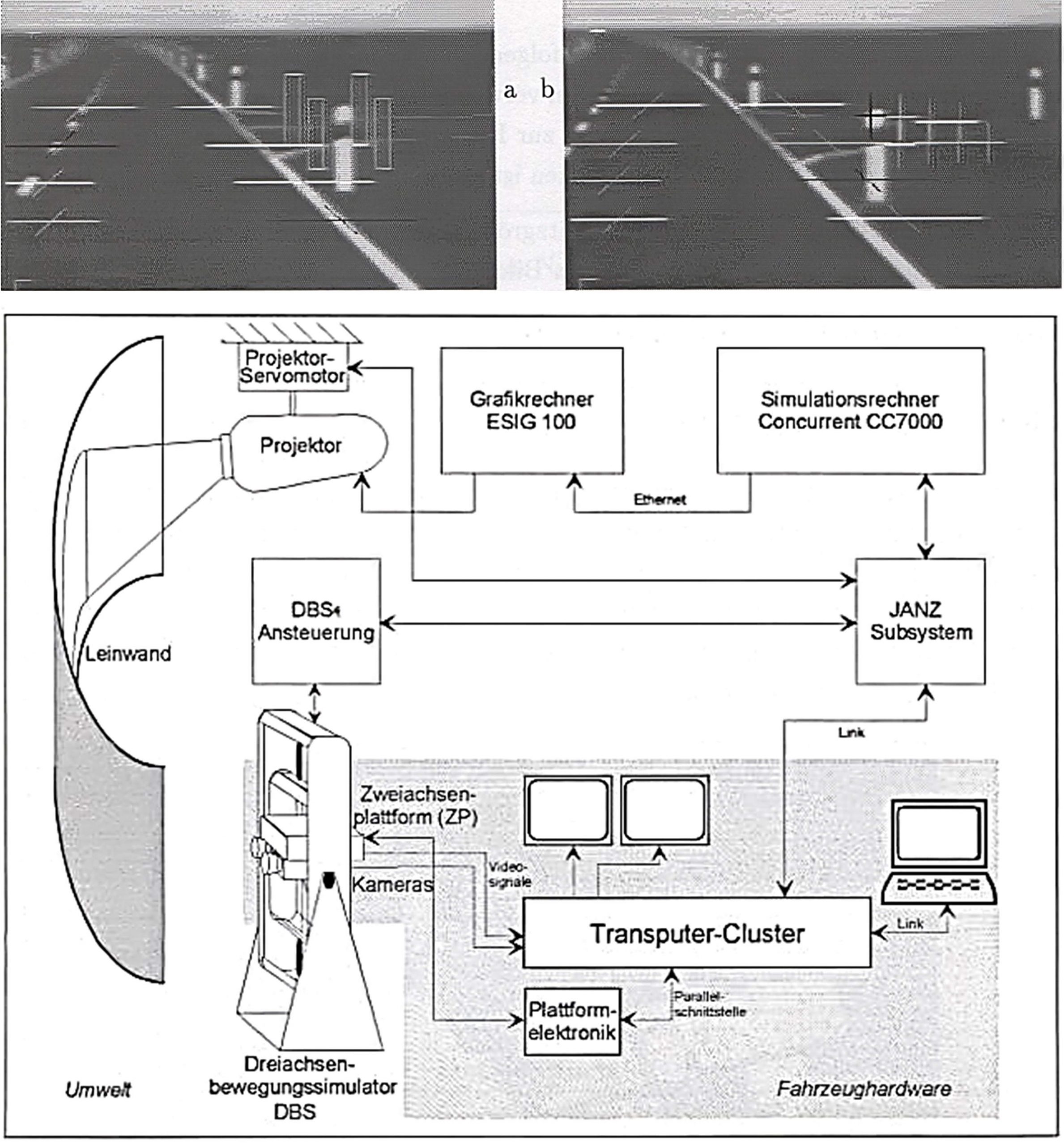H.4.1a Vector graphics and real-time feature extraction 1978 – 1987
In the late 1970’s, a Picture System 2 of E&S allowed generating perspective views of road scenes by line drawings like the one shown in the figure. The requested high image rate was one of the basic ingredients to the success of the 4-D approach to real-time machine vision since it forced everybody involved to think according to this dynamic constraint.
The other advantage was that quick changes from one application area to another were possible with this setup. This allowed test environments of different road types to be available on a mouse click. The figure shows some real-time results of road recognition [Meissner 1982].
See also
H.4.1b Computer Generated Images (CGI): Real-time feature extraction for crossroad detection 1990 – 1996
The initial steps in developing this capability have been done in the HIL-simulation loop since this maneuver is rather complex, needing bifocal vision and gaze control: Beside road and crossroad detection
- it also requires estimating distance to the point of intersection of both roads as well as
- determining the intersection angle between the roads. [Note that this is “scout-type” vision with as few as possible in-advance-knowledge]
- Repeatability of experiments is essential since timing for correct triggering and performance of the elements of the turn-off maneuver is important; small errors in maneuver execution may lead to dangerous situations in the real world.
- This effort took several man-years until sufficient fitness had been achieved for trying the transition to real-world experiments with the test vehicle VaMoRs. Of course, turning off to the right or to the left are rather different maneuvers needing special attention.
- The flexibility in changing the geometry of intersections (road widths with numbers of lanes, intersection angles helps increasing efficiency in testing the capability achieved.
- Above all, the main advantage of CGI is that the scene to be recognized by vision is already available in the computer for comparison and that scene parameters can be varied at will.
References
Meissner HG (1982): Steuerung dynamischer Systeme aufgrund bildhafter Informationen. Dissertation, UniBwM / LRT. Kurzfassung
Dickmanns ED, Zapp A, Otto KD (1984). Ein Simulationskreis zur Entwicklung einer automatischen Fahrzeugführung mit bildhaften und inertialen Signalen. In Breitenecker, et al. (ed): Simulationstechnik, Informatik-Fachberichte 85, Springer, pp 554-558
Dickmanns ED, Zapp A (1985): Guiding Land Vehicles Along Roadways by Computer Vision. Proc. Congres Automatique 1985, AFCET, Toulouse, pp 233-244
Zapp A (1988): Automatische Straßenfahrzeugführung durch Rechnersehen, Dissertation, UniBwM / LRT. Kurzfassung
Baten S, Müller N (1995). Navigation with an Autonomous Vehicle on Arbitrary Roads. In Linkwitz et al. (eds): High Precision Navigation. Dümmler Verlag, Bonn, pp. 415-421
Müller N (1996). Autonomes Manövrieren und Navigieren mit einem sehenden Straßenfahrzeug, Dissertation, UniBwM, LRT, Kurzfassung

